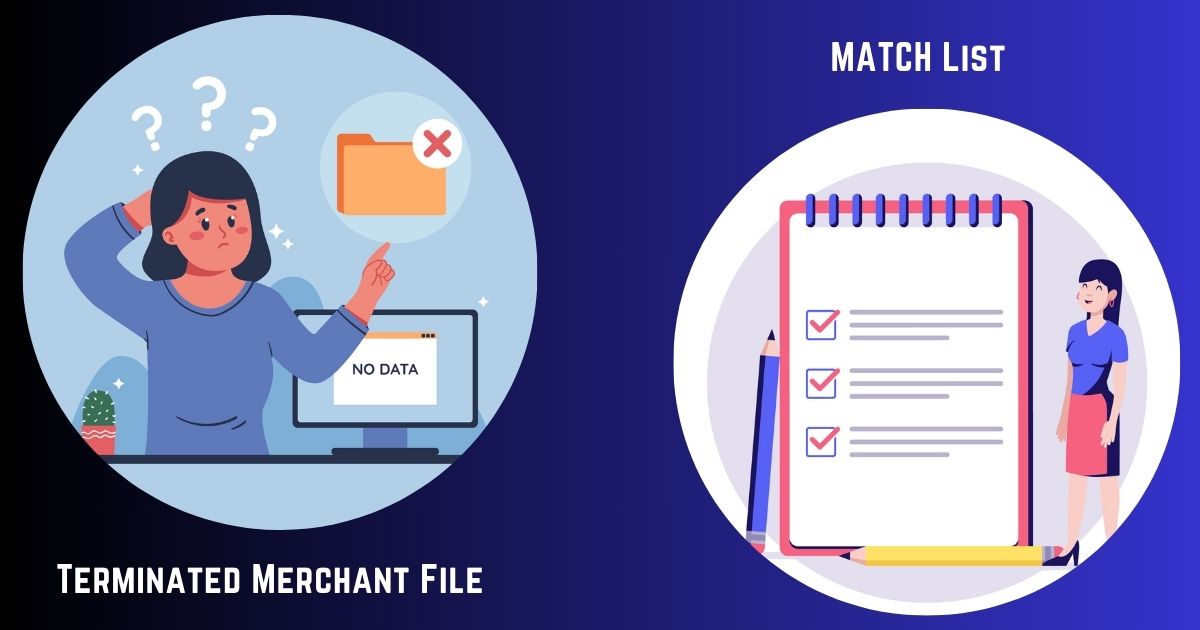
| April 6th, 2021 |
Take Glance At The Information Terminated Merchant File And MATCH List
In the digital payment processing industry, the concept of Terminated Merchant File is also called MasterCard Alert To Control High-risk Merchants.
The TMF is the kind of list maintained by the credit card processing industry that collects business records and business owners whose merchant accounts got terminated for excessive chargebacks, indulgence in fraudulent activity, and severe money laundering account misuse.
If a business merchant’s enterprise gets listed on the MATCH list, it can prevent merchants from processing credit cards and domestic banks until they are removed from the list. Moreover, in some cases, they need to find a processor who is willing to risk them.
Fortunately, some merchant account providers can allow TMF/MATCH businesses to accept credit cards. These account providers specialize in high-risk business types that can help business owners open their accounts through offshore banks.
A few Things You Need To Know —
If a business ever gets listed on the MATCH list, it doesn’t mean that it will be forever blacklisted.
Neither does it ban the merchant account from establishing a straight record nor obstruct it from recording free and fair transactions.
The Mastercard MATCH List —
The MATCH is the system that is designed and managed by Mastercard. The database houses information about businesses and their business owners whose credit card processing privileges have been restricted for some specific reasons.
The MATCH list is used by acquiring banks to evaluate potential applicants. This is done to assess and control the risk associated with credit card processing. In other words, the MATCH file is like a “Blacklist” that allows banks to cross-check at the time of taking on a new merchant so that they don’t invest in the bad apples.
The acquiring banks control the option to add or remove the merchants from the MATCH database. Moreover, the acquiring banks who put merchants on the list carry the power to remove them.
The major problem linked with the MATCH list is that Mastercard executes a little thing in verifying the accuracy of the acquiring banks’ information.
Ever wondered why merchants end up on the MATCH list?
Usually, the merchant ends up on the MATCH list because of their unethical activities, refraining from acquiring banks to do business with them.
Although the specific reasons for being added to the MATCH database can vary, they depend upon too many chargebacks, their magnitude of dependency on executing fraudulent activity, and money laundering activities.
Over the years, Mastercard has come up with stricter guidelines for adding merchants to the list.
Is it true that a terminated merchant account will ever put you on the MATCH list?
As per the rules in Mastercard (SRP, Section 11.2.2), an acquiring bank is needed to put a merchant on the MATCH list if the merchant’s account ever gets terminated for any reason on the list.
If an acquiring bank terminates the relationship with a merchant, then one should not be put on the list.
Know the Ways of Getting off the MATCH list —
There are some ways to get one off the MATCH list.
As a merchant account holder, you need to find the incident that placed you on the list ages after five years.
Suppose you are added to the list by mistake because of PCI non-compliance. Later on, you have become compliant.
If a merchant account holder has been added to the list by mistake, then it means that he/she must have contacted the bank that put them on the list. In this case, you are required to get a previous processor to find out the details about the acquiring bank.
Thus, these are significant reasons for getting you off the MATCH list.